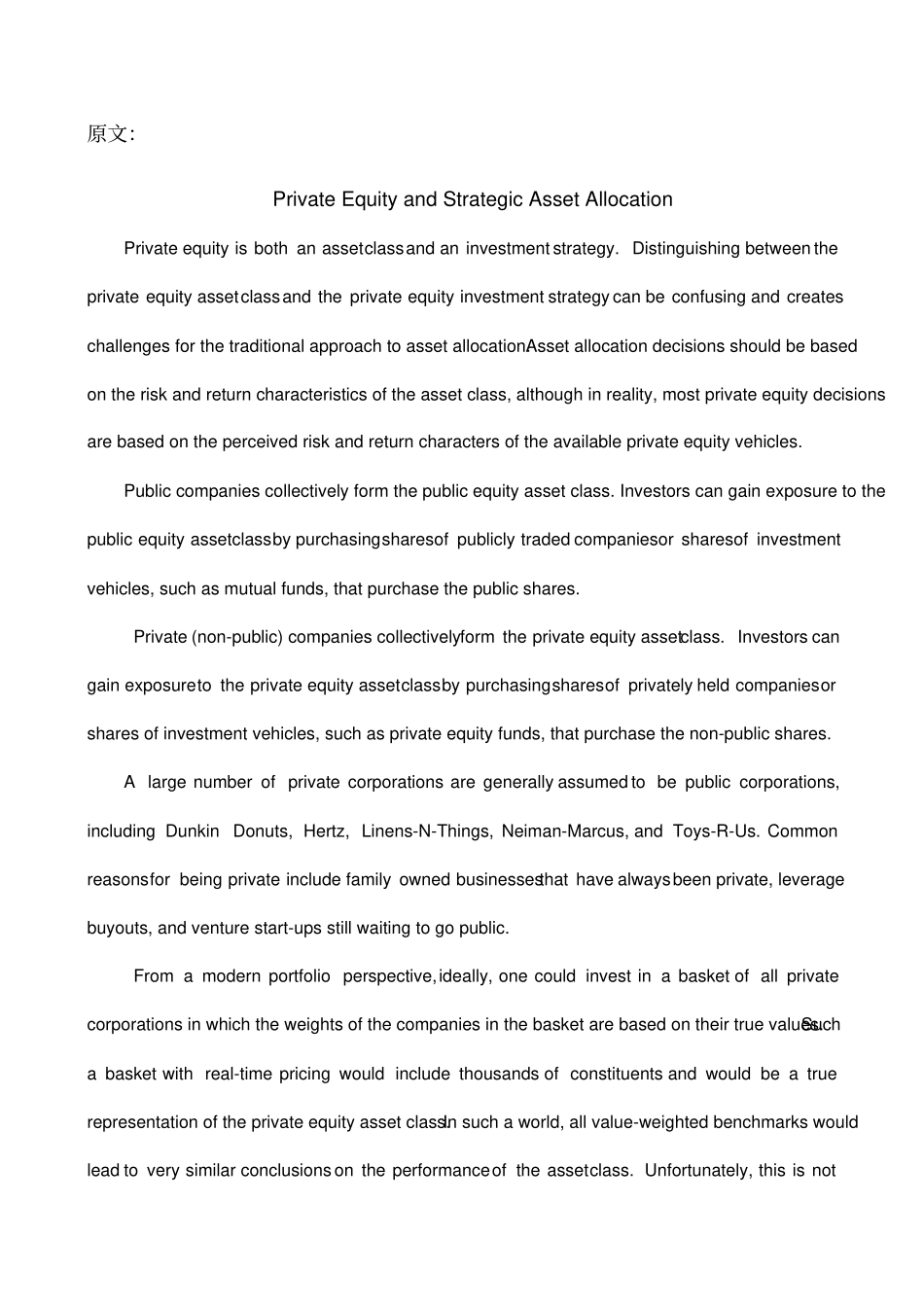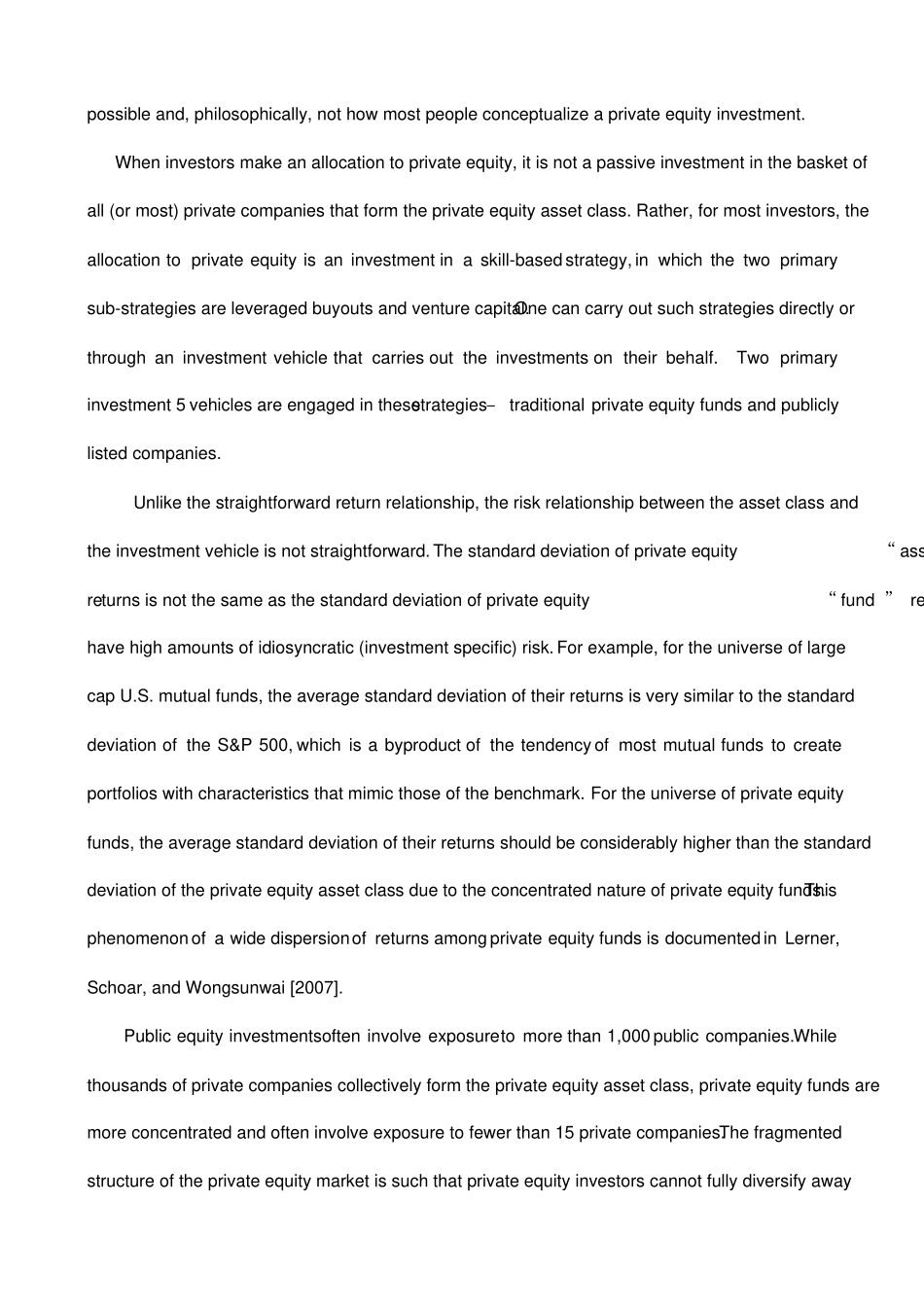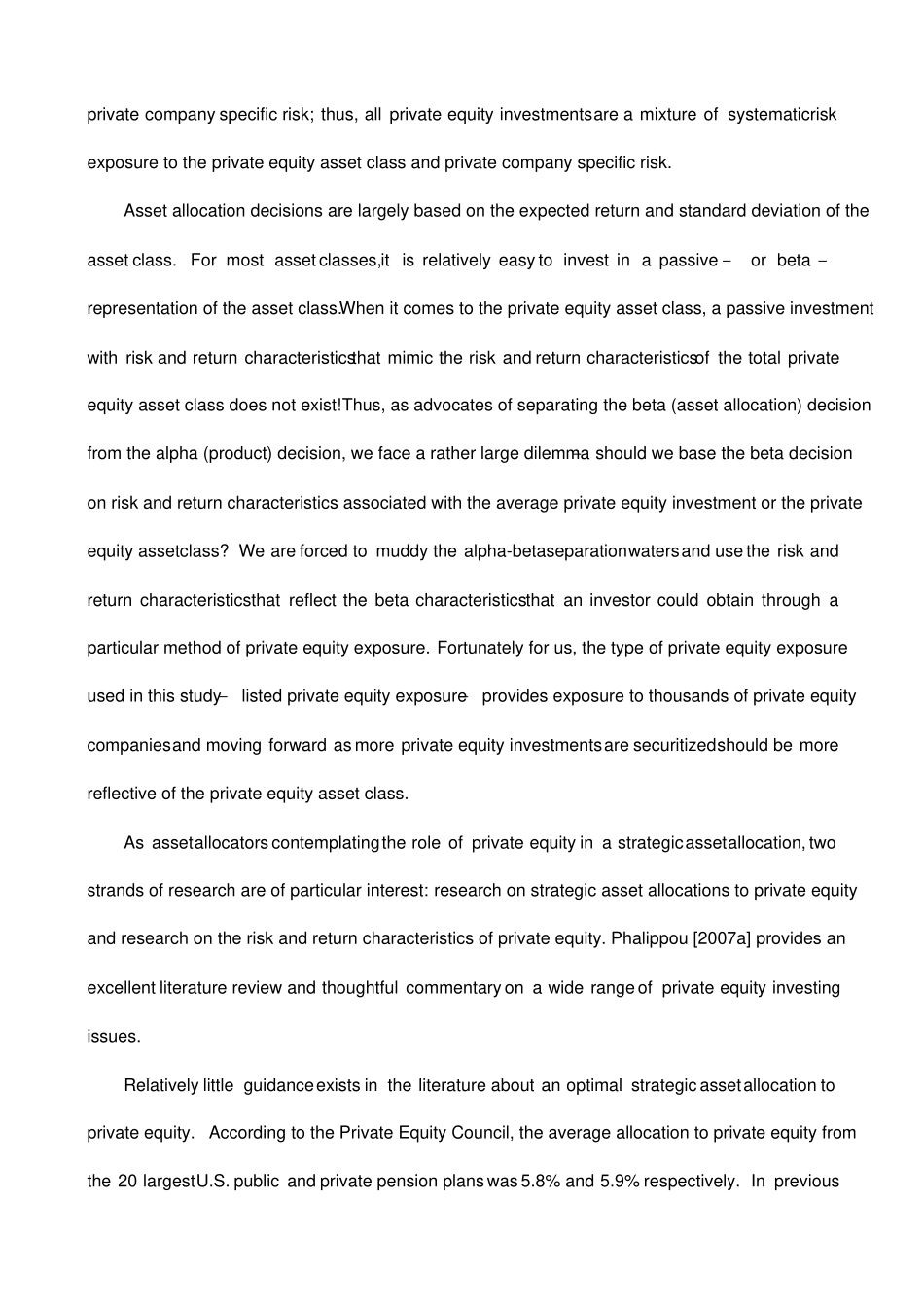原文:Private Equity and Strategic Asset Allocation Private equity is both an asset class and an investment strategy. Distinguishing between the private equity asset class and the private equity investment strategy can be confusing and creates challenges for the traditional approach to asset allocation. Asset allocation decisions should be based on the risk and return characteristics of the asset class, although in reality, most private equity decisions are based on the perceived risk and return characters of the available private equity vehicles. Public companies collectively form the public equity asset class. Investors can gain exposure to the public equity asset class by purchasing shares of publicly traded companies or shares of investment vehicles, such as mutual funds, that purchase the public shares. Private (non-public) companies collectively form the private equity asset class. Investors can gain exposure to the private equity asset class by purchasing shares of privately held companies or shares of investment vehicles, such as private equity funds, that purchase the non-public shares. A large number of private corporations are generally assumed to be public corporations, including Dunkin Donuts, Hertz, Linens-N-Things, Neiman-Marcus, and Toys-R-Us. Common reasons for being private include family owned businesses that have always been private, leverage buyouts, and venture start-ups still waiting to go public. From a modern portfolio perspective, ideally, one could invest in a basket of all private corporations in which the weights of the companies in the basket are based on their true values. Such a basket with real-time pricing would include thousands of constituents and would be a true representatio...


